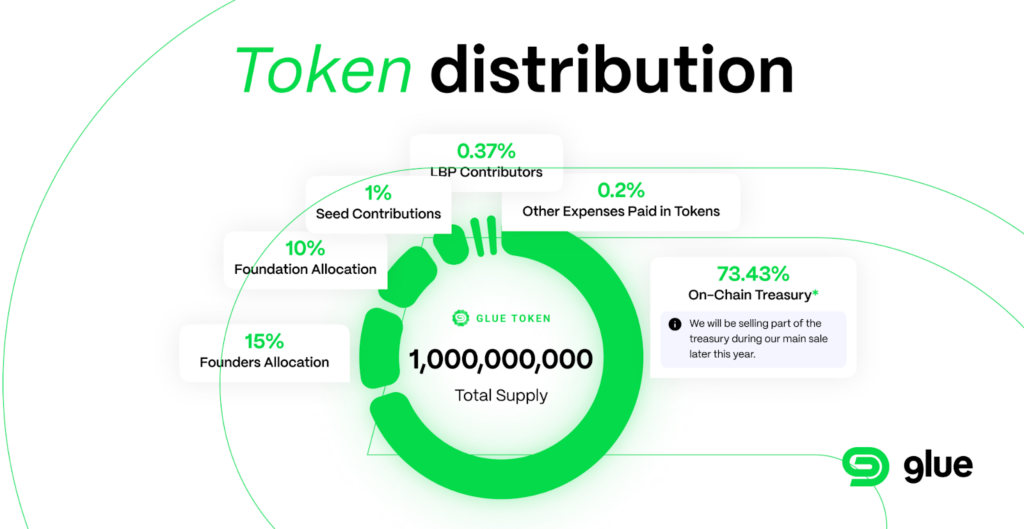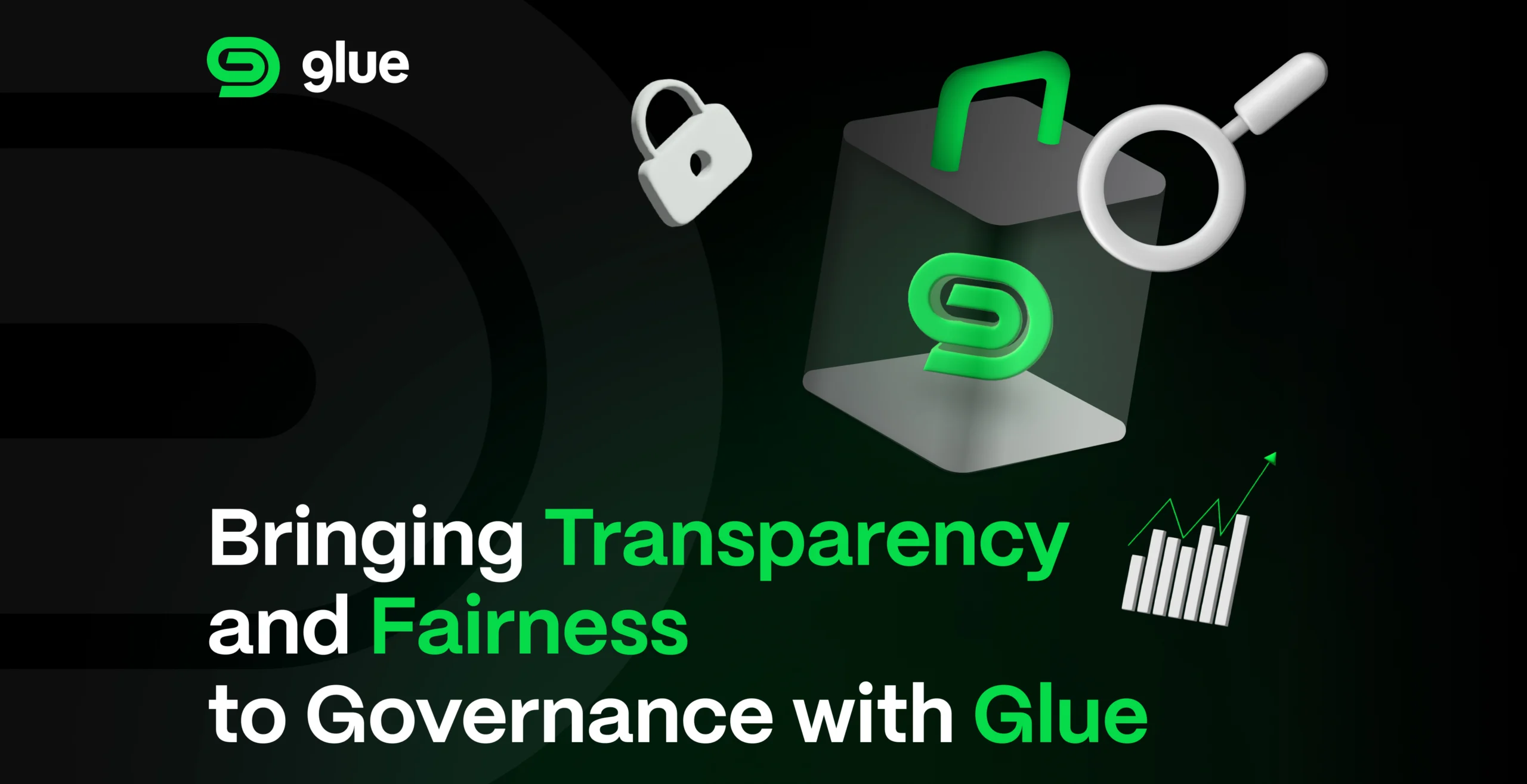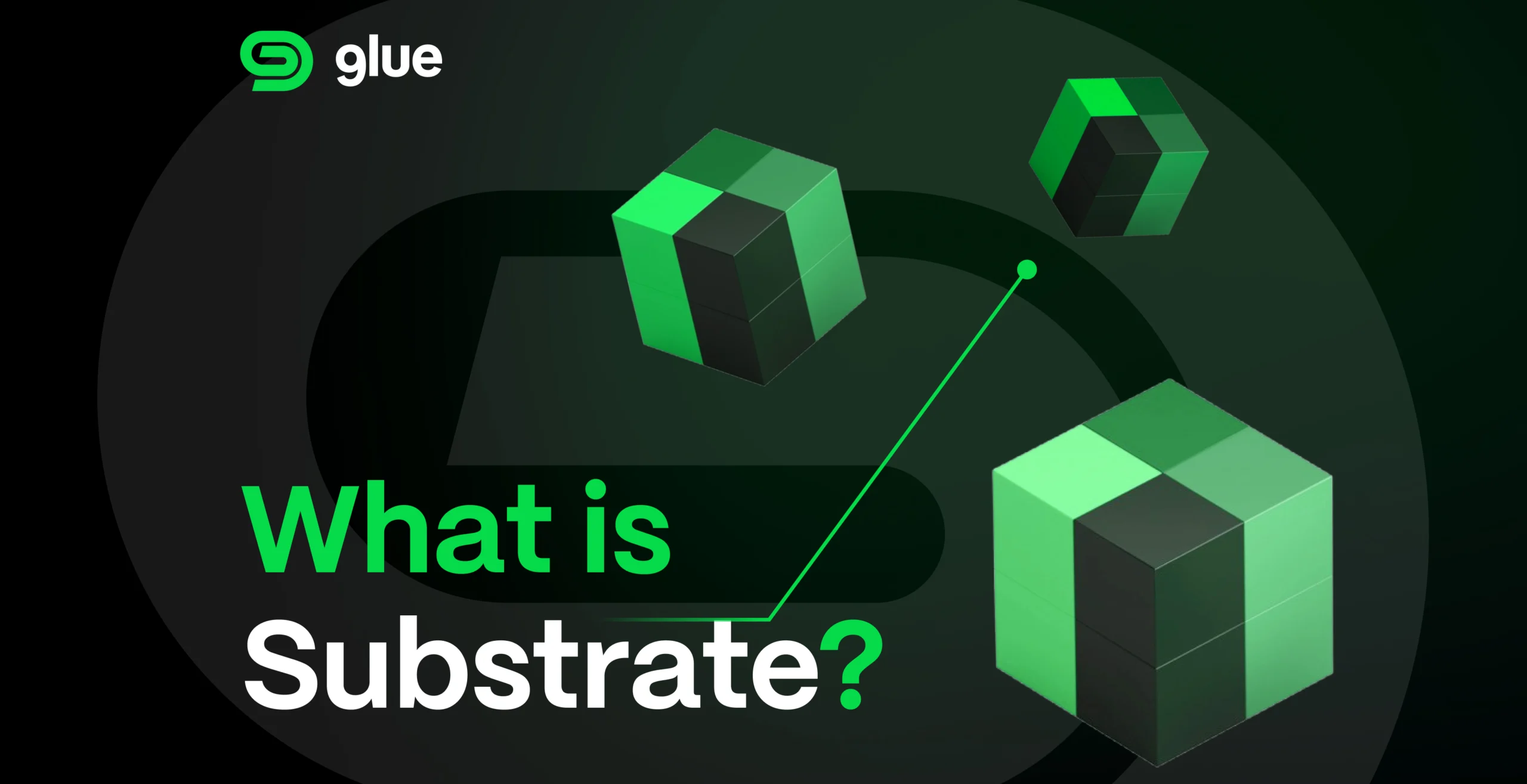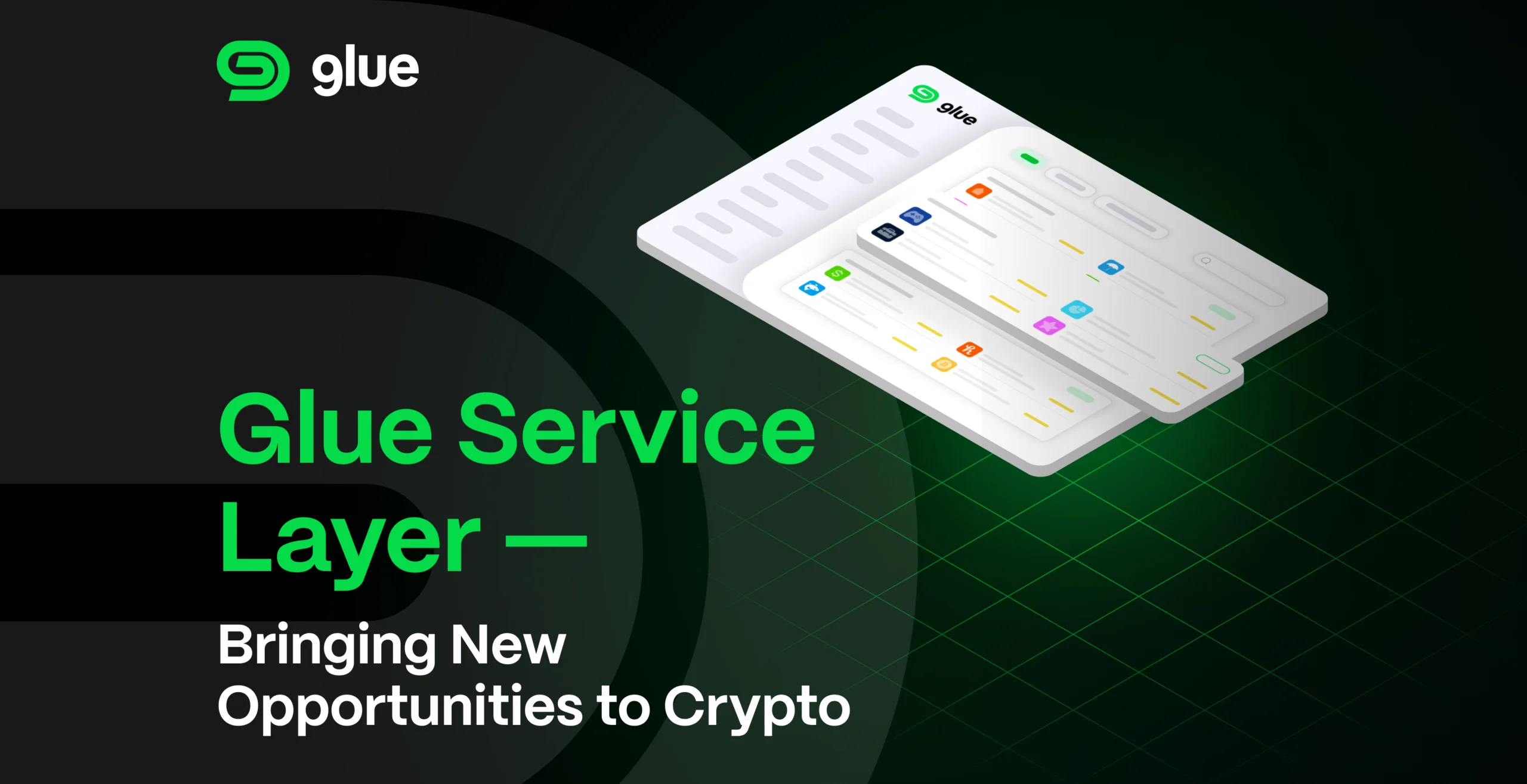Most crypto projects still talk in evangelistic terms, promising something that has never been seen before. While big on promises, look under the hood and you can often notice vague and contradictory statements. Nowhere is this more apparent than in the areas of governance and tokenomics.
With Glue, we want to give all users transparent and clear information from the start. This blog will lay out in concise terms Glue’s token allocation and approach to governance, with all the mechanisms in place for not just a bright start, but sustained development and growth over the long term. At the heart of this lies a commitment to fairness, so that our token holders and users can get the most out of our offerings.
Glue token allocation: everything you need to know
Our native token — GLUE — will be used throughout our entire ecosystem. We cover this issue in greater depth in our Glue blockchain 101 blog post, showing how a unified token model reduces transaction complexity for users and aligns the incentives for all Layer 2 developers.
With the Glue token underpinning everything we do, it is extremely important that we get things right from the start, which includes fair allocation and use.
Token allocation breakdown
The initial distribution at the genesis block is strategically designed to align the interests of various stakeholders and facilitate the long-term sustainability of the ecosystem. The first (genesis) block on the Glue mainnet will allocate funds as follows:
- Seed contributors: 1%
- Second funding round contributors: 0.37%
- Founders allocation: 15% (subject to a vesting schedule — see below)
- Glue Foundation: 10% (see below)
- Other expenses paid in tokens: 0.2%
- On-Chain Treasury: 73.43%

The role of the on-chain treasury
The launch of major crypto projects usually involves significant VC funding. While this is indeed profitable, the mobilization of such large resources from just a few sources has implications for both token stability and governance.
Instead, the funds needed for development and expansion are right here in our on-chain treasury, representing 73.44% of the token supply.
This significant store of capital will be used — outside of the business as usual activities of blockchain development and security — to put Glue’s growth strategy to work. This includes large-scale user acquisition campaigns and extensive support for the rapid development of applications within the Glue ecosystem.
A significant outlay is needed to entice users and services to make the switch from centralized finance to come over to DeFi, but once this occurs, we will have brought an entire new market and range of products to the world of decentralized applications.
Of course, with such a large treasury, effective and accountable governance is paramount. We will explain how this works in the ‘Glue governance’ section below.
No token lockups (except for founders)
Lockups are routinely seen as a necessary evil for new projects in the crypto world, but can lead to market distortions, short positions, and large sell-offs when tokens are unlocked, leading to reduced confidence in the long-term viability of the token and the project behind it.
For this reason, Glue took the decision not to operate with token lockups. We believe in letting the market operate naturally, with investors coming to our project due to their belief in its success, rather than the prospects of a short-term gain and then selling off.
Fair token share
Glue aims to achieve capital efficiency, with steady funding inflows over the long term, rather than large initial capital injections that encourage overspend and the centralization of funds. Through incremental capital raises we can ensure that each dollar is used effectively and avoid the pressures and risks associated with overfunding.
During our first seed round, we raised $1.5m from strategic individual investors and an additional $1m from our co-founders. Unusual to traditional raises, we did not have a set price per token (or valuation) for investors. Instead, all investors agreed to invest at a 30% discount to the next round, whenever that may be.
Of our two capital raising efforts so far, the largest individual contribution outside Glue’s founders has been just $250,000. In the second crowd-funding round conducted in April 2024 on Fjord Foundry, 300 individuals invested US $2.5 million worth of ETH, averaging just over $8,000 per person.
Having taken this position from the very beginning has meant there are no seed stage whales who command outsized influence as we expand. Why does this matter so much? It means that one individual, or a small united group, can’t destabilize the Glue token or unduly influence governance decisions.
Founder accountability
Rug pull scams — where founders build up hype in a project, raise substantial funds, and then abruptly sell their token share and abandon the project — are still a prevalent feature of decentralized finance. There can also be mismanagement, manipulation, and self-serving decisions taken by the leadership in order to increase their share of the profits after the initial launch.
Glue counters this by subjecting the founders’ tokens (15% of the 1 billion Glue tokens in circulation) to a vesting schedule over 5 years, with a one-year cliff. In this scenario, all the founders’ tokens are locked up and released in yearly increments. The one-year cliff ensures that no tokens are unlocked in the first year after Glue’s launch.
With the founders’ own funds tied up in the project, the only incentive is to ensure that each decision taken will be to maximize the growth, usability, and security of the ecosystem, building trust every step of the way with all those invested in the project.
Glue governance
The large size of Glue’s on-chain treasury — roughly 74% of the genesis block token allocation — gives us the ability to implement substantial growth and development strategies. But as with any business, it’s not the size of the funds, but how they are managed. Effective governance is key to keeping things on the best possible track, and will be handled by the Glue Foundation.
The Glue Foundation
The Glue Foundation receives 10% of the token supply from the genesis block, and will be tasked with executing the main sale, as well as the upcoming token generation event.
The remaining tokens will be used for:
- Market maker incentives, ensuring Glue Hub’s liquidity and stability.
- Operational funding, where funds are used for ongoing development, marketing and community engagement: critical activities that support the continuous growth of the Glue ecosystem.
Avoiding traditional pitfalls with a truly decentralized treasury
Despite decentralized projects often claiming that anyone can be a stakeholder, they still suffer from many of the pitfalls of traditional finance, including centralized control, opaque decision making, inadequate mechanisms to remove founders, and incentive misalignment, where the secure positions of the foundation become prioritized over taking decisions that benefit the growth of the ecosystem.
As explained in our token allocation section, we’ve already laid the best possible foundations to ensure that the Glue token isn’t concentrated in the hands of a small few who are solely after quick profits. With an equitable spread of tokens among a range of parties who genuinely want to see Glue flourish, as well as the right infrastructure in place, we have ensured that capital efficiency, transparency, and accountability are built into the fabric of the ecosystem.
So what are the results? To understand this, we need to break down exactly how Glue’s governance works:
- Through Substrate, the framework that was used to create Glue’s infrastructure, code is able to be changed through runtime upgrades. This is a departure from other projects that use a multi-signature approach which makes governance votes merely advisory.
- Glue’s treasury is held in an on-chain address that no individual or entity owns or controls, and funds can only be moved through governance votes by Glue token holders.
- The Glue Foundation will be tasked with putting together funding proposals each 6 months, with smaller urgent items put forward as required. These proposals will decide which projects to fund and which areas of security require extra capital.
- If a founder isn’t performing adequately, the network can effectively “fire” them by halting operational funds. This enforces continuous alignment between the foundation and what’s best for the network and token holders.
As you can see, the pitfalls of centralized control, opaque decision making and incentive alignment are avoided through the decentralized treasury, giving the Glue ecosystem the best start for continued success.
Connect with the Glue community on X and the Telegram community chat to stay updated and become a part of our vision for the future of decentralized finance.




